History Of The Bridge
History of the Hood River Bridge
The mile-long Hood River-White Salmon Interstate Bridge crosses the Columbia River at approximately river mile 169.8 on the Bonneville Pool. The Bridge was built by the Oregon-Washington Bridge Company and opened on December 6, 1924.
Click on a time period below to read more about the history of this important interstate connection.
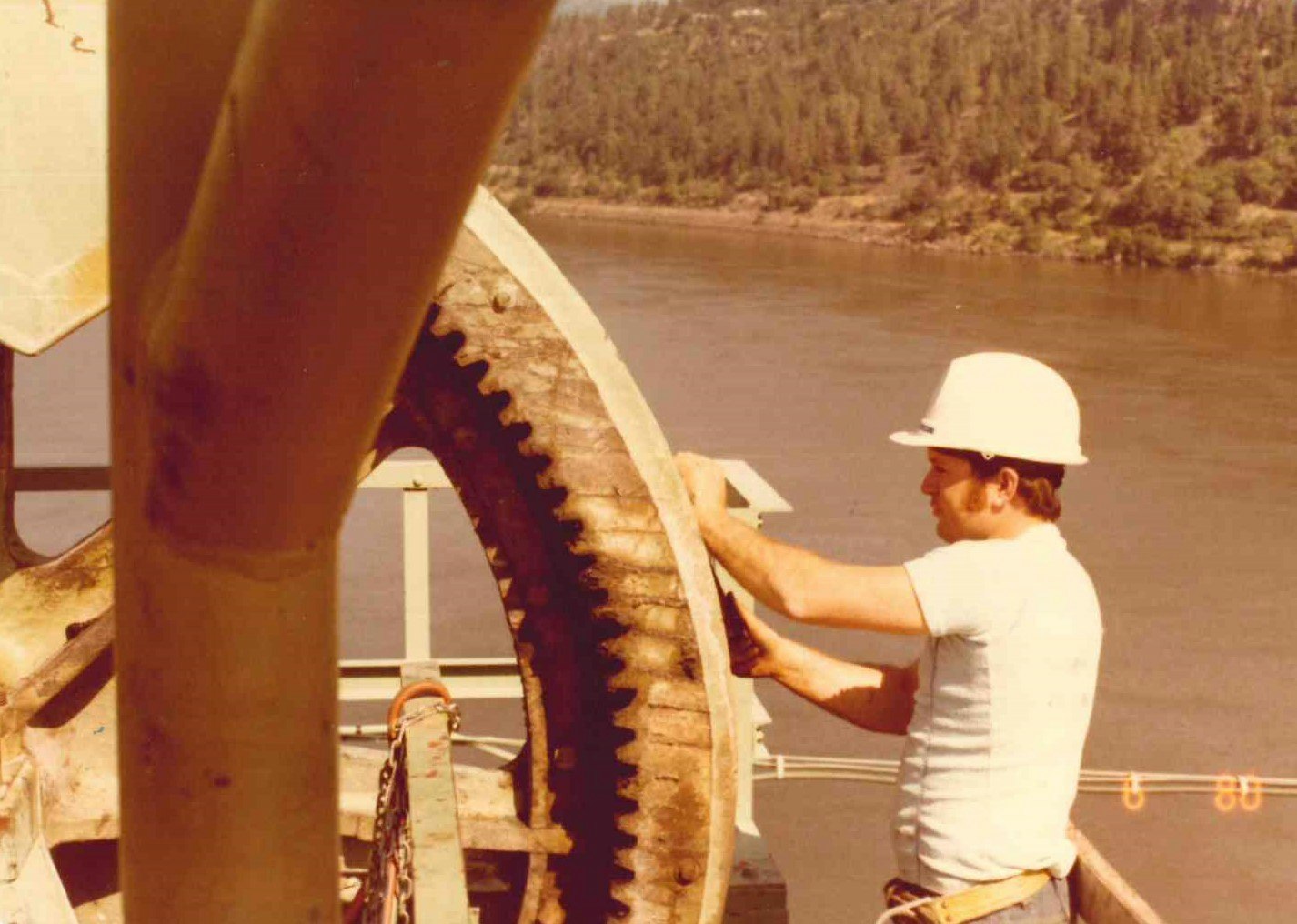


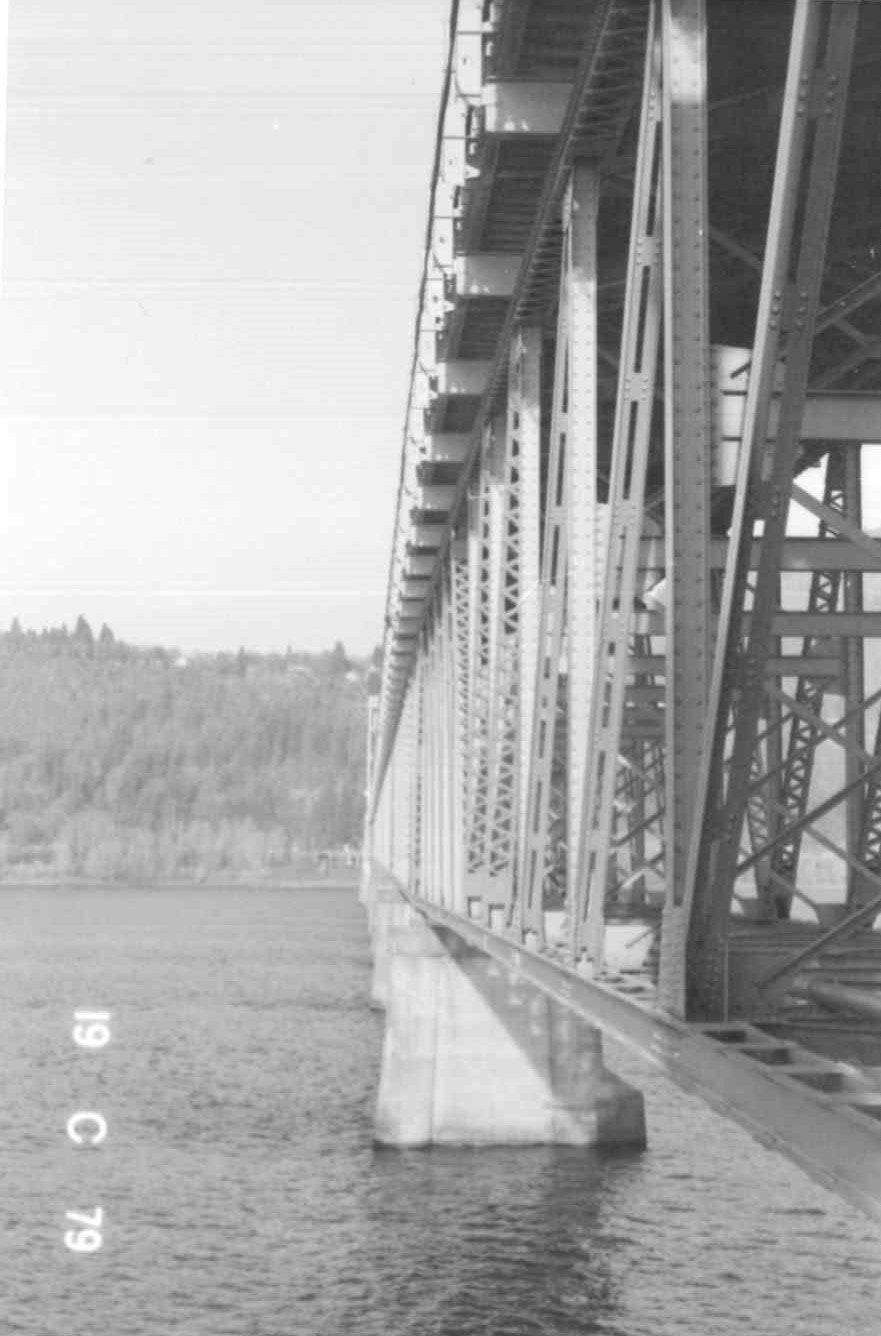
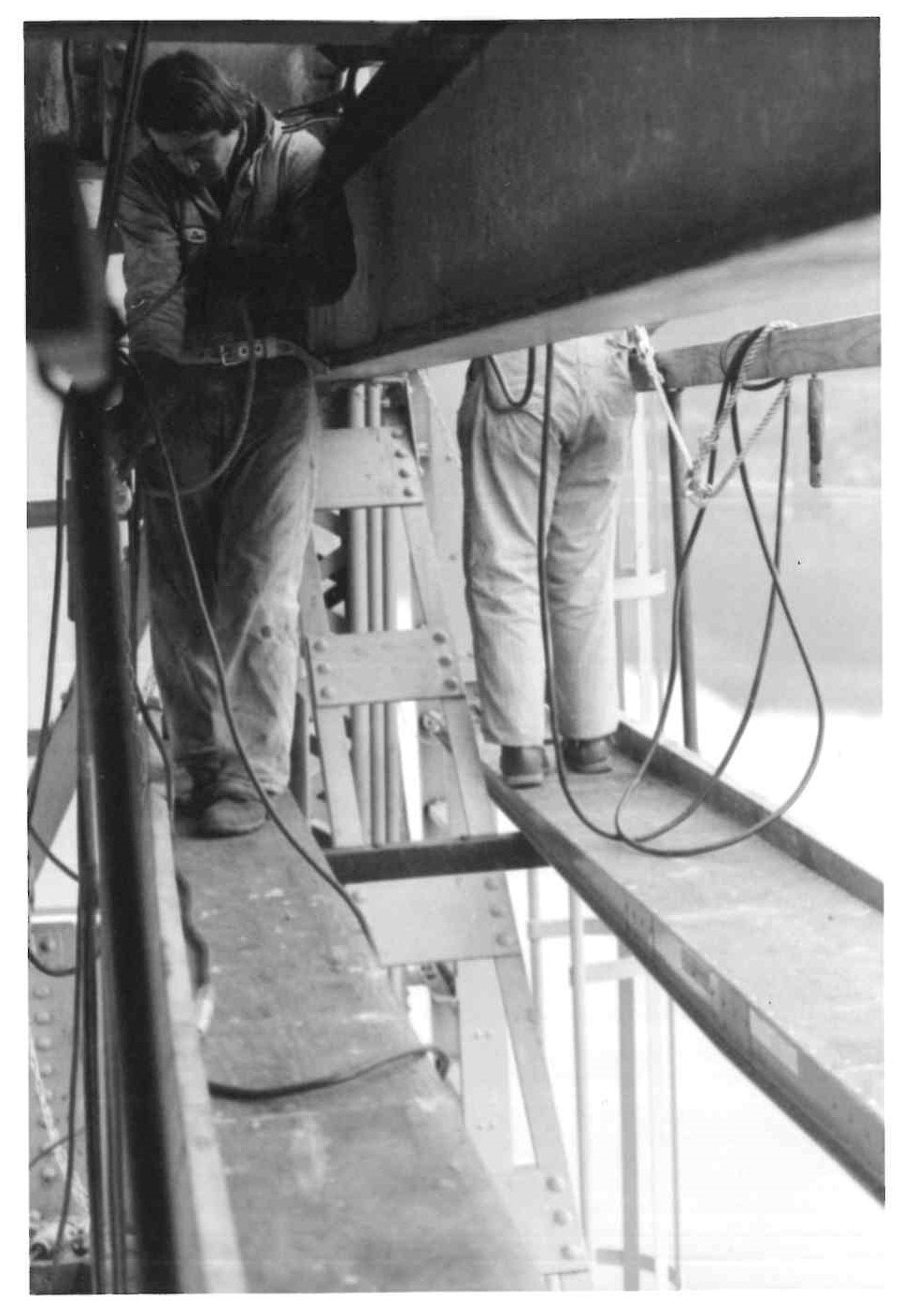
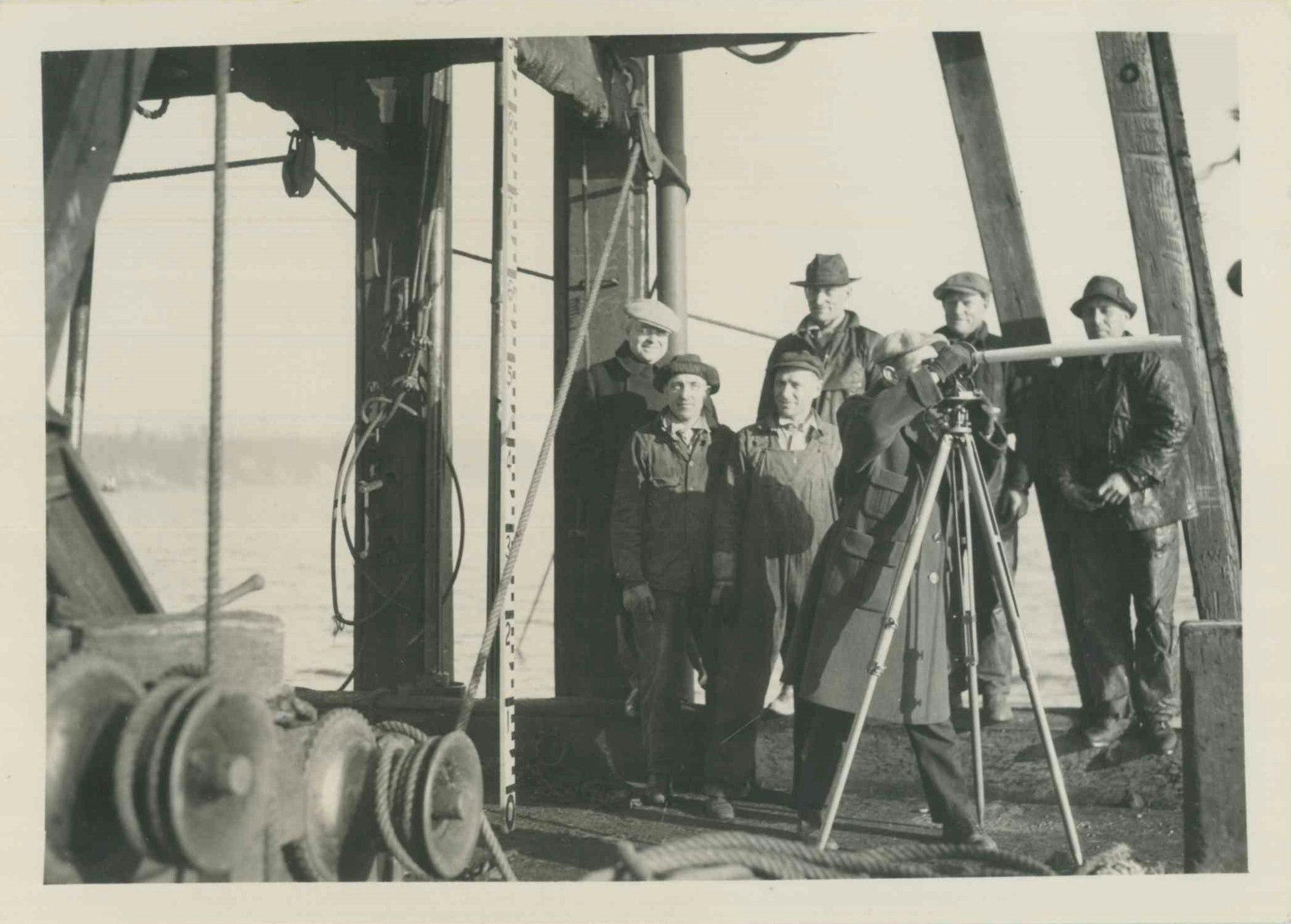
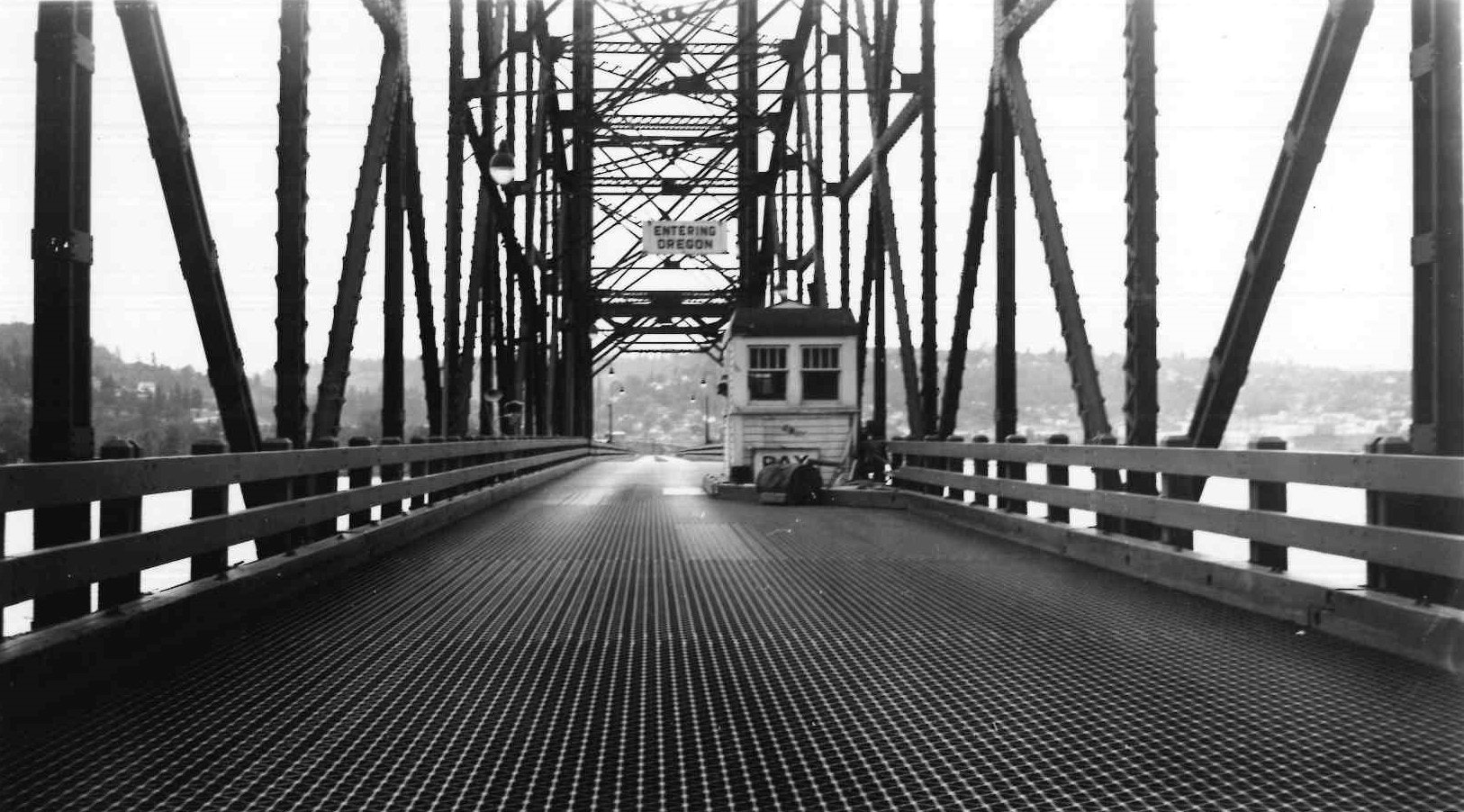

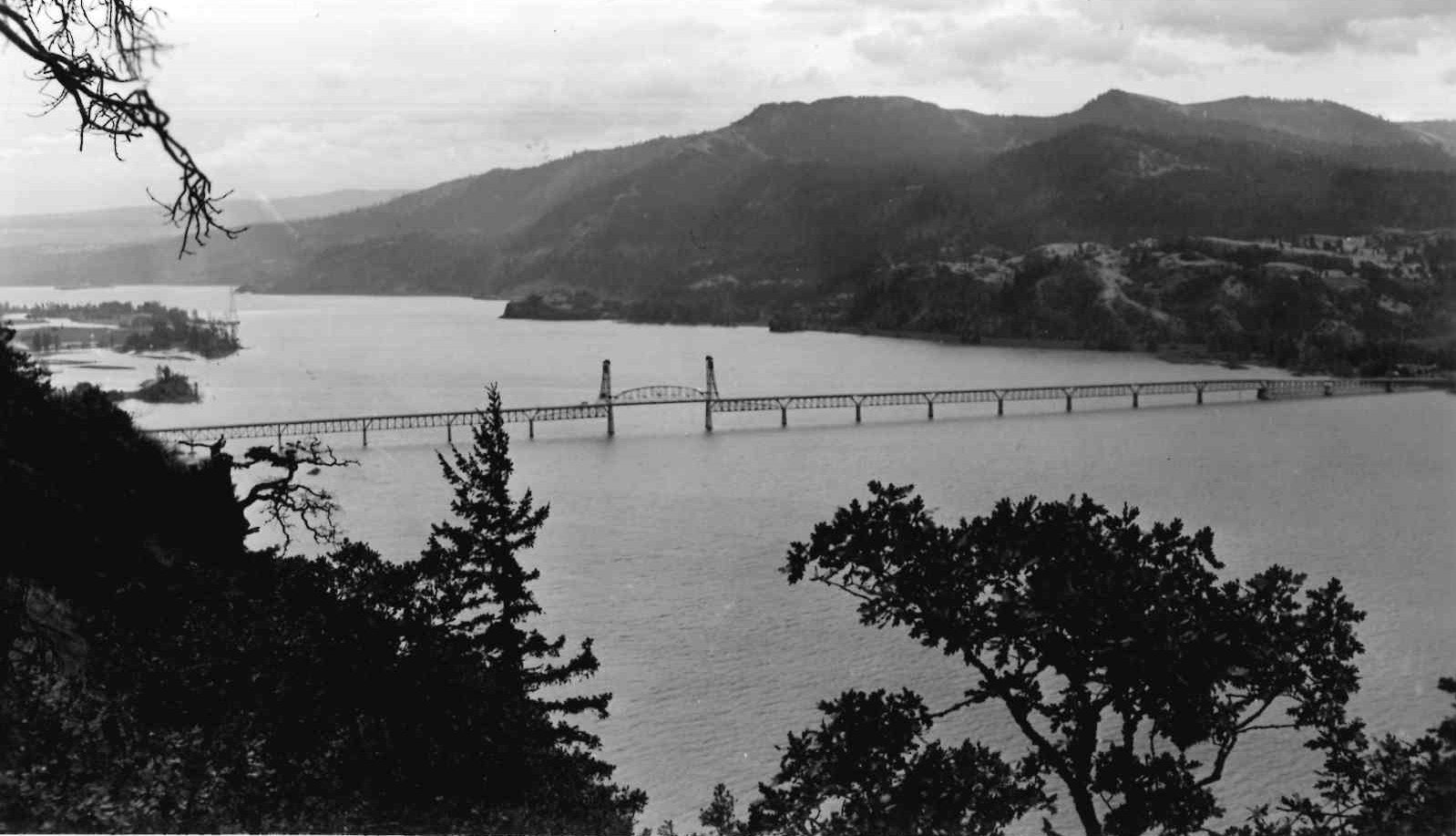

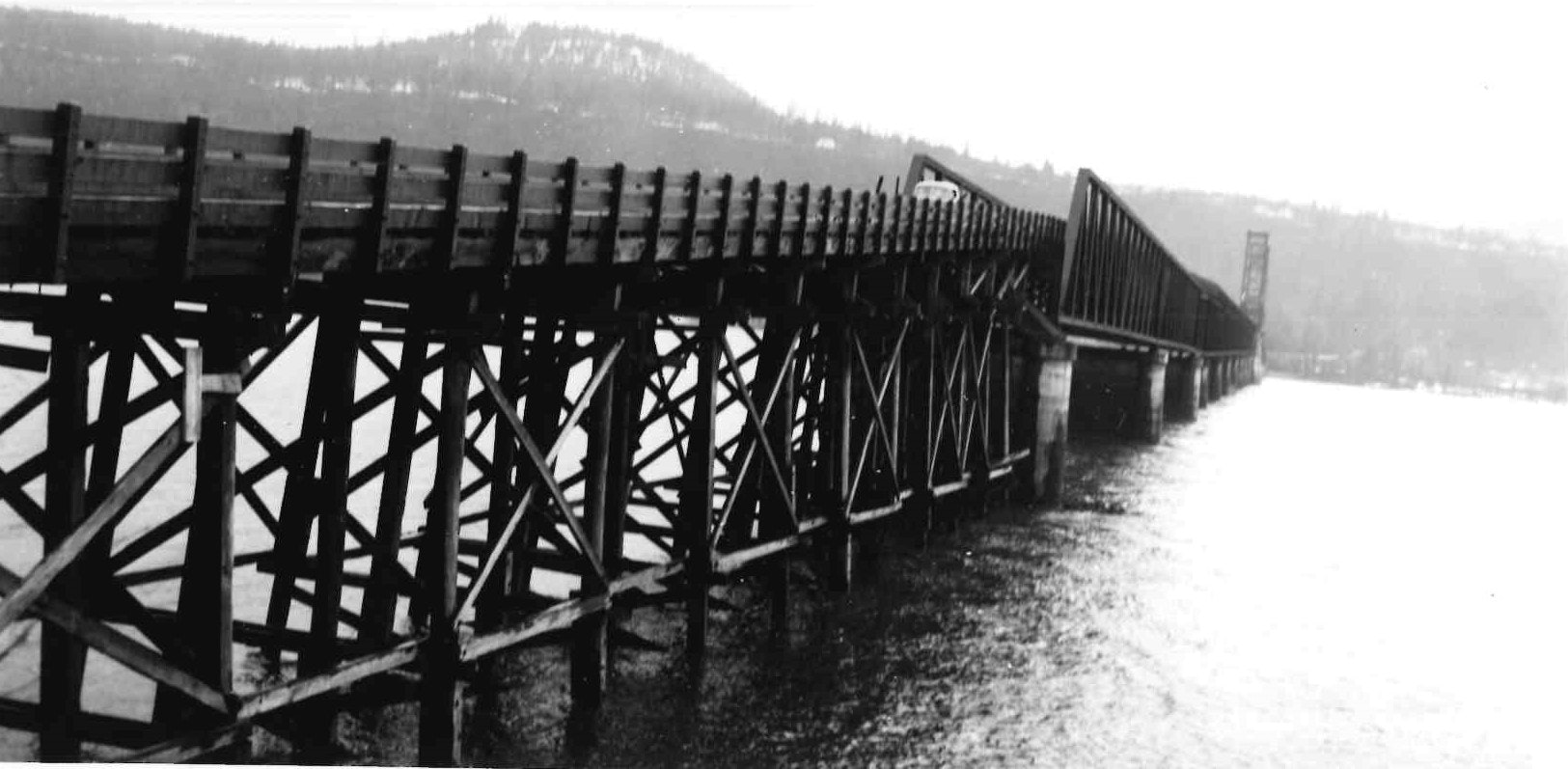
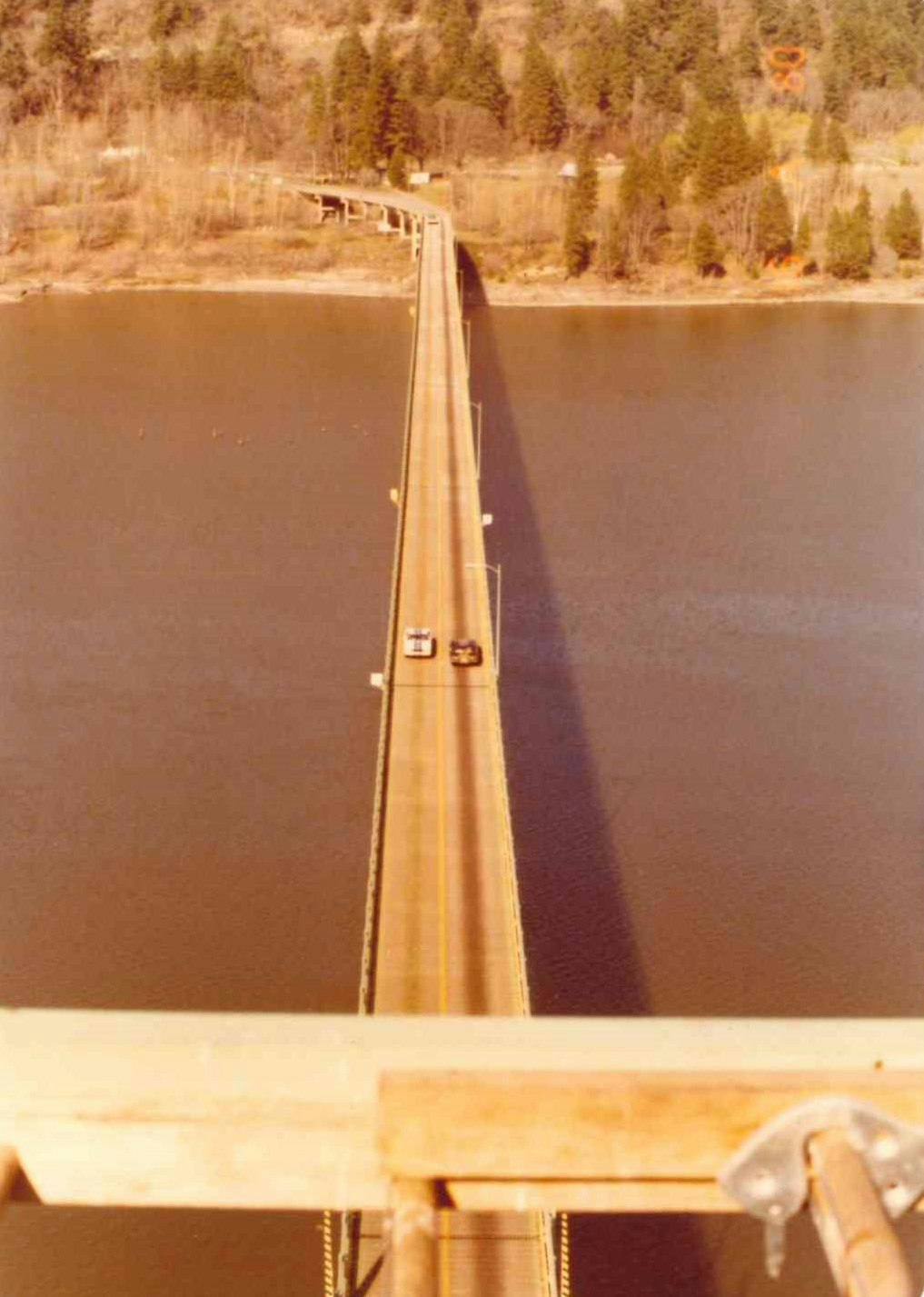

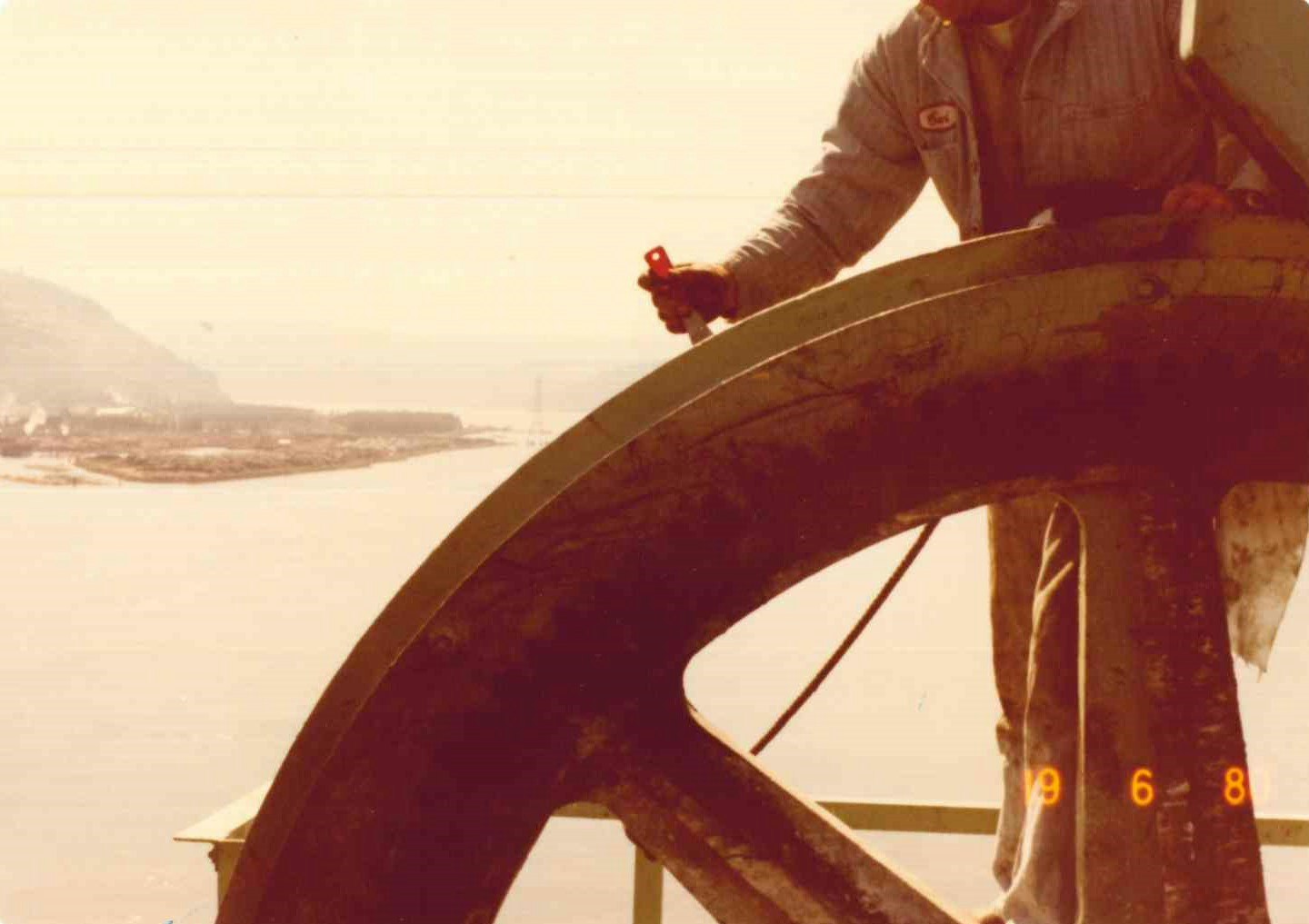
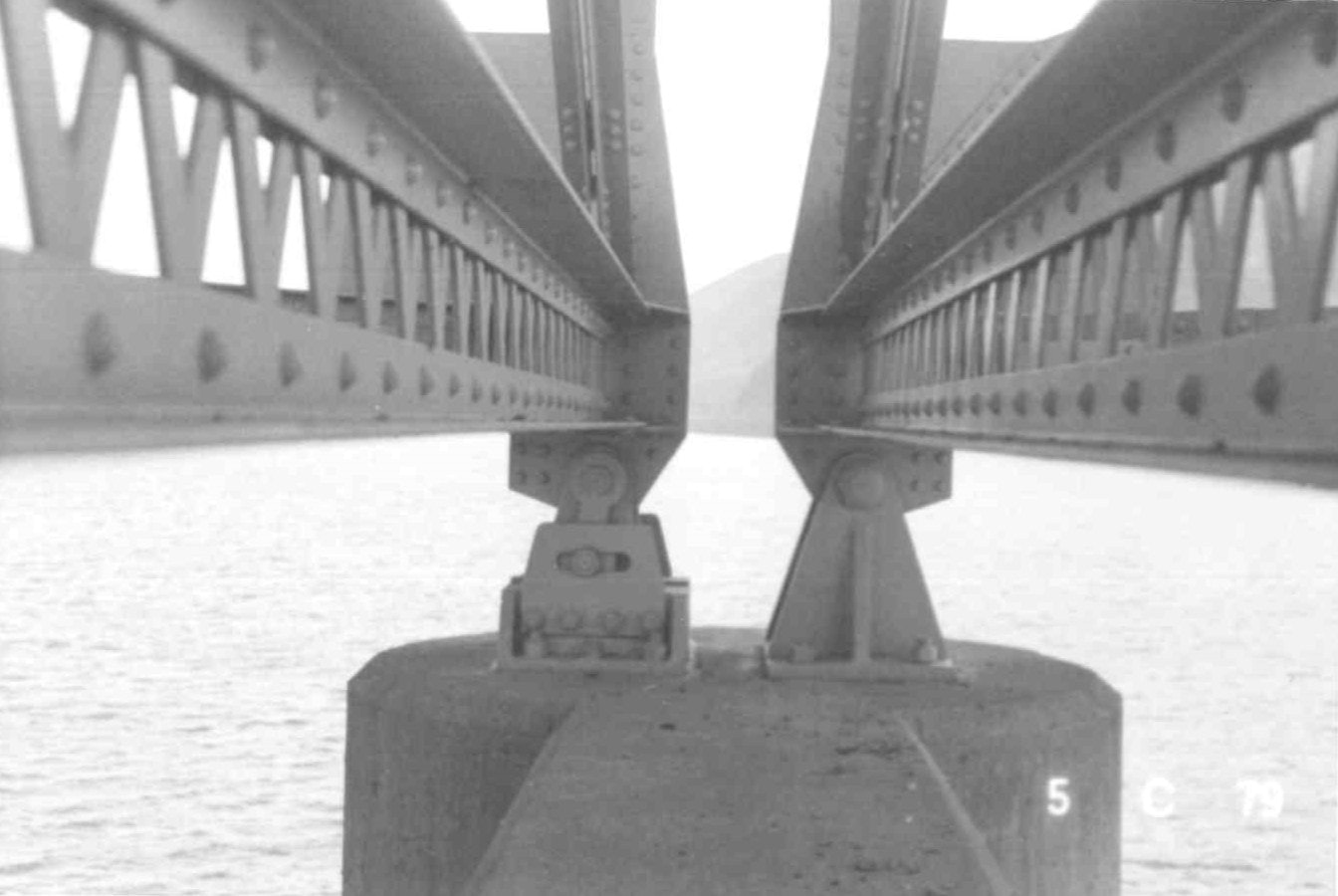

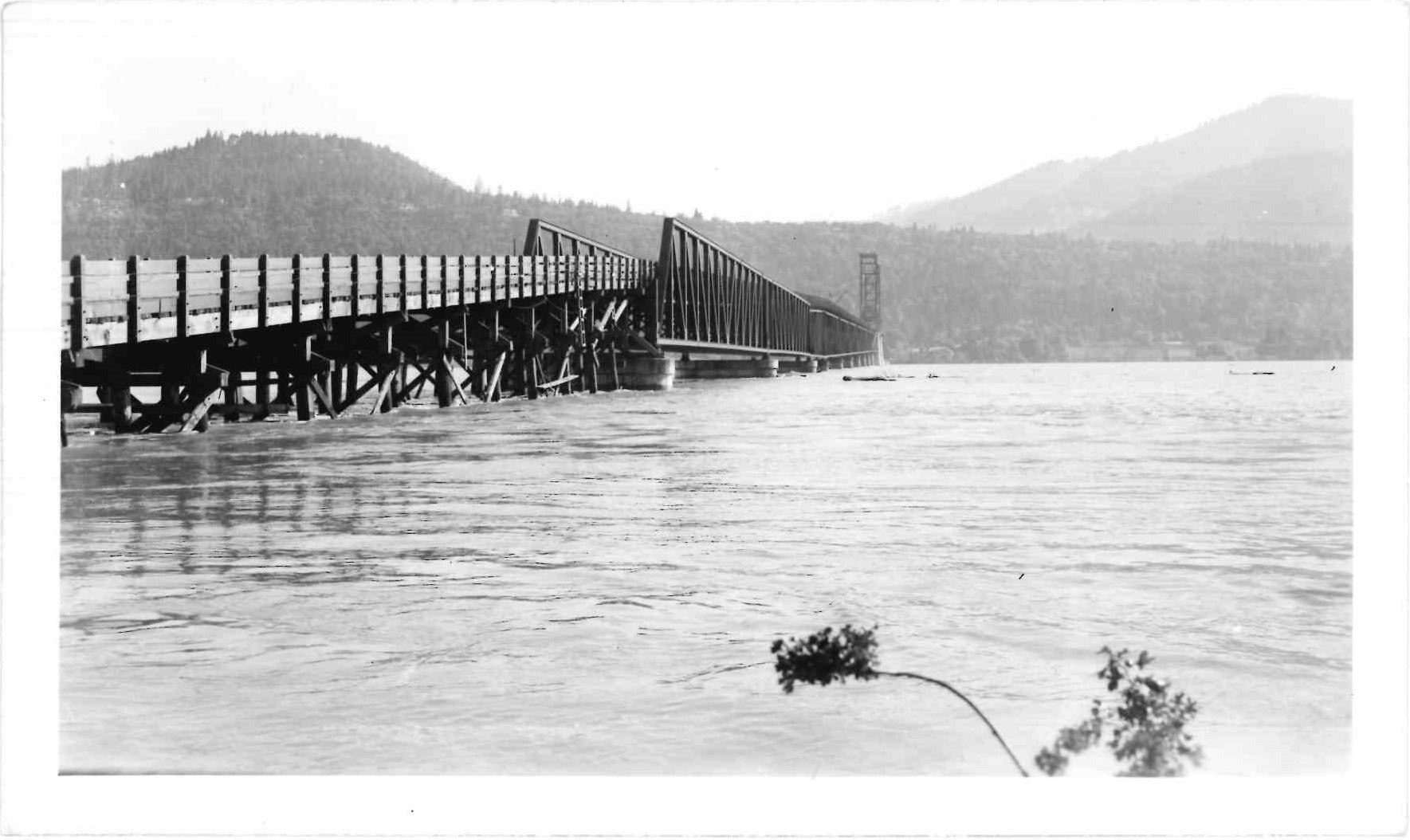
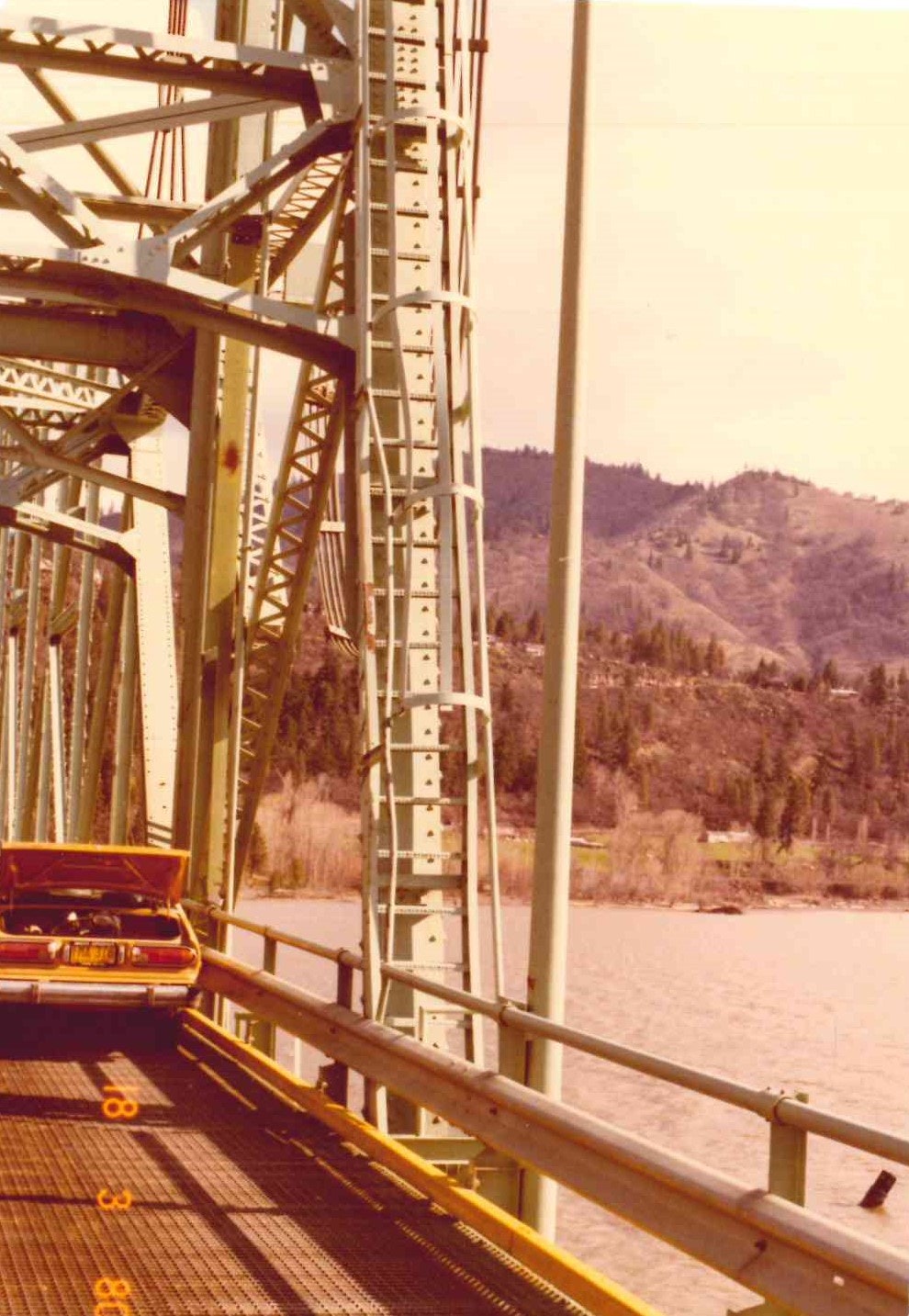
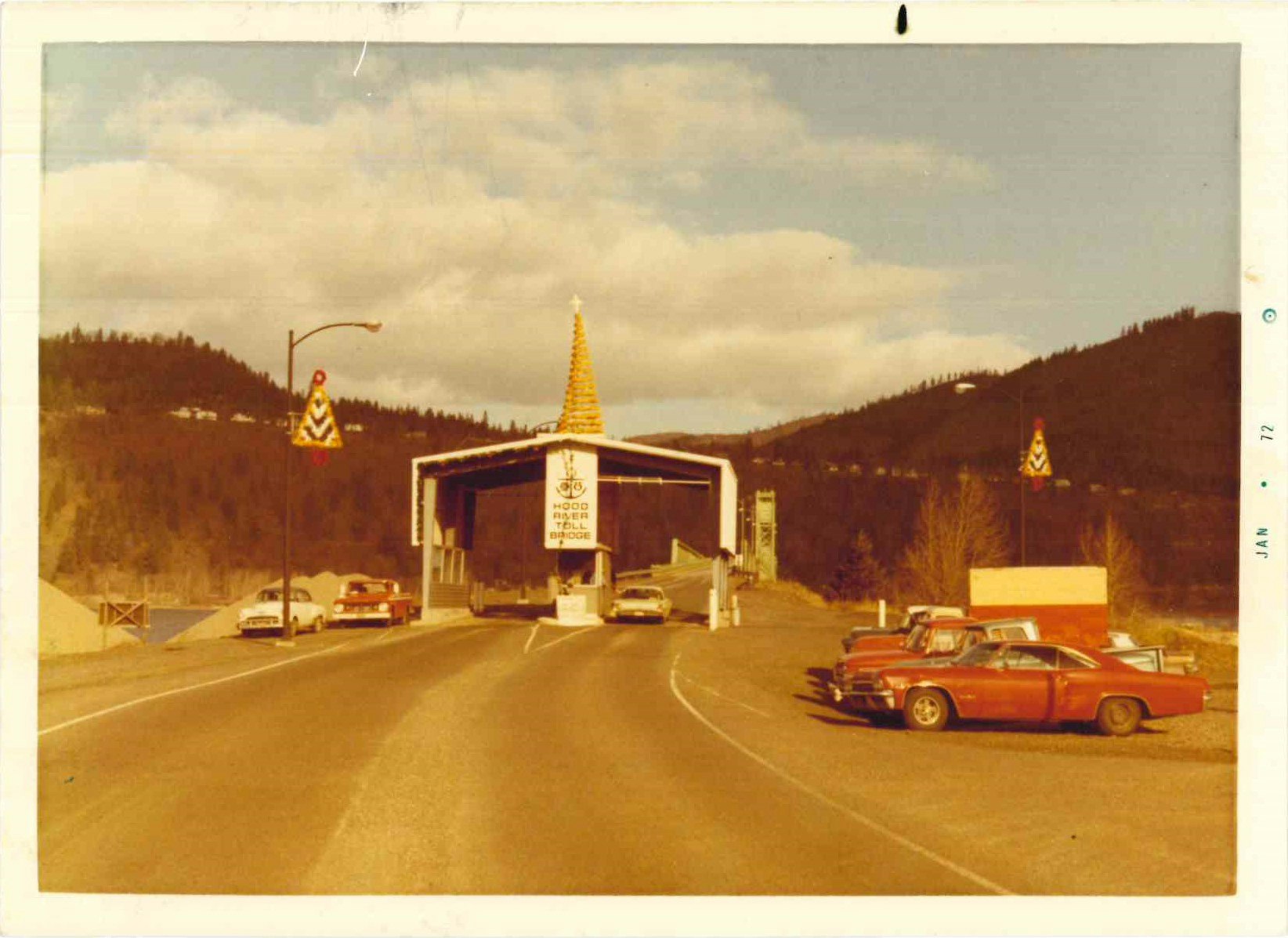
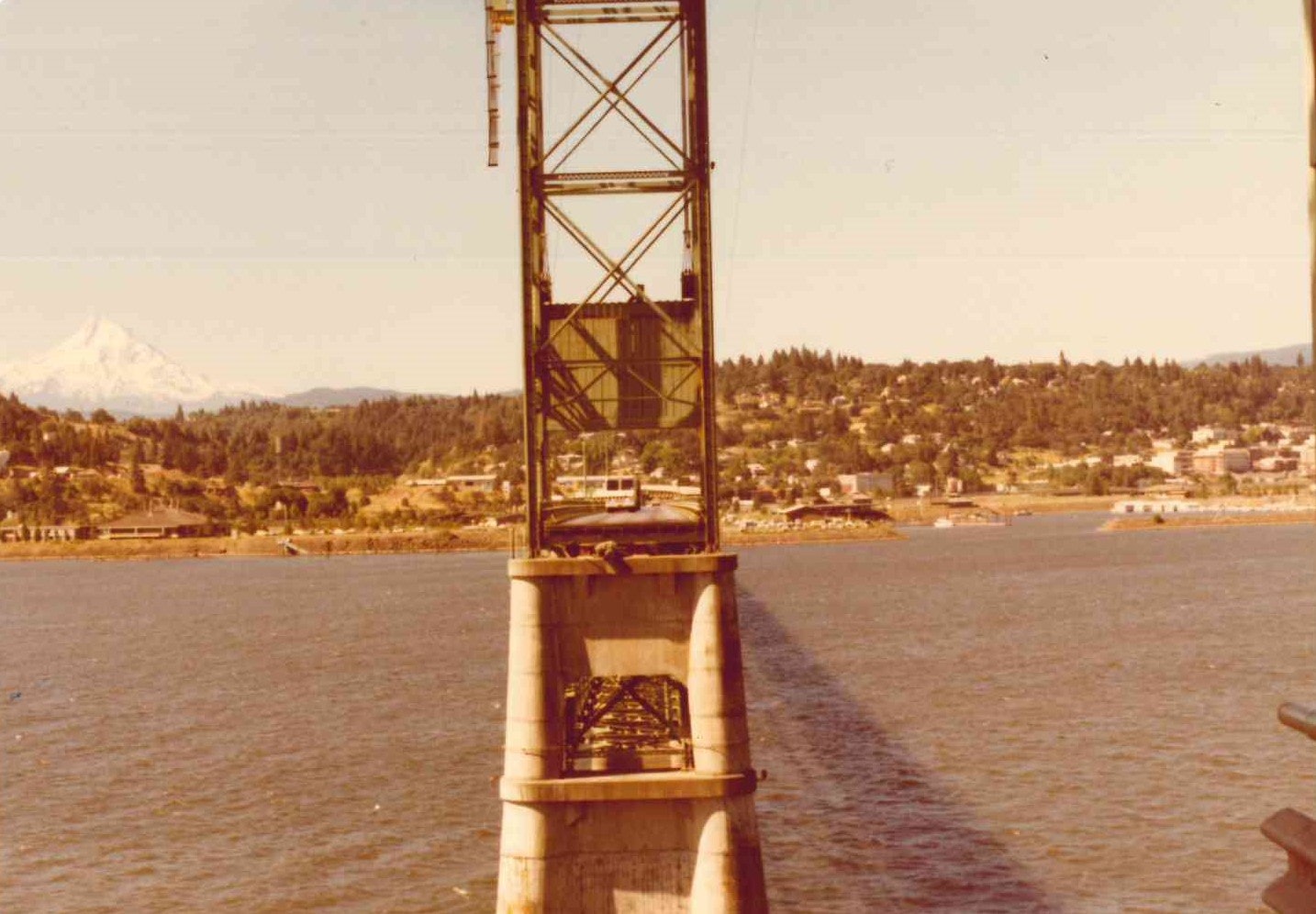

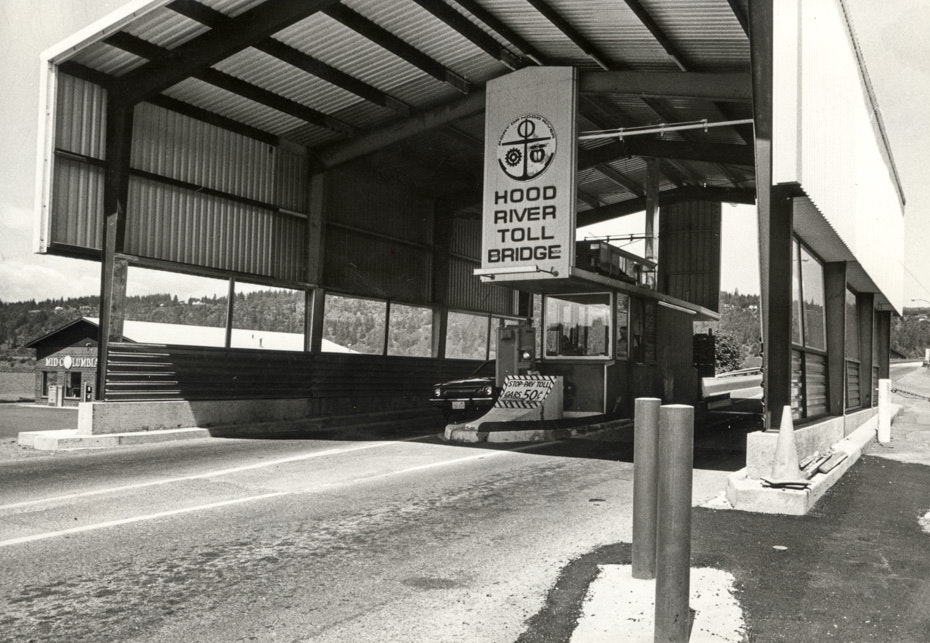






















History
The Bridge was built by the Oregon-Washington Bridge Company and opened to traffic on December 6, 1924.
Photo credit: HistoricHoodRiver.com. Leslie Bulter driving the Last Spike. 1924
1924 Toll Rates:
- Persons over 7 years of age: 10 cents
- Livestock: One animal, driven, led or ridden, + one person: 20 cents
- Drove of animals (10 head or under)+one person: 10 cents each; 4 cents each additional
- Animal drawn vehicle, 1-2 animals: 75 cents; 3 animals: $1.00; 4-6 animals: $1.50 (50 cents per animal over that)
- Vehicle in tow: 50 cents
- Bicycle: 20 cents; Motorcycle: 50 cents; Trailer: 50 cents
- Auto: 75 cents
- Truck < 1 ton: 75 cents; Truck between 1-2 ton: $1.50; Truck 2-4 ton: $2.00
- Truck > 4 ton: $5.00; Tractor: $5.00
The Secretary of War notified The Oregon-Washington Bridge Company that the fixed channel span required conversion to a lift span to accommodate the completion of the Bonneville Dam and subsequent raised water level.
Bonneville Dam was completed and the Bridge was virtually rebuilt at this time. The seven 208′ deck spans on the Oregon side and the two 208′ deck spans on the Washington side were raised to their present elevation by raising the tops of the piers. The lift span and lift towers were added. Three additional spans were added on the south side and two shore spans were constructed to permit lowering the road grade as it approached the Oregon shore. Six deck spans were added on the north side as well as a tollbooth.
Photo credit: HistoricHoodRiver.com. The old lift span, viewed from the wat
The Oregon Legislature enacted a law permitting the acquisition or construction of interstate toll bridges by certain municipalities, including ports, which was upheld by the Oregon Supreme Court in June of 1950.
The Port of Hood River acquired the Bridge under that act on December 12, 1950, at 12:00 noon, from the Oregon-Washington Bridge Company for the purchase price of $800,000. Each state, port, city and county were asked to purchase and maintain the Bridge; all declined but the Port of Hood River. The Port Commissioners were Les Sherwood, J.H. Travis, H.M. Saling, Ross Collie, and Luke Nichols.
During this year, $725,000 was expended to modify and improve the Bridge into top condition, including the relocation of the tollbooth to the south (Oregon) side. Steel beams with steel grate decking replaced the wood decking system. The railing system was reconstructed following the general design and many of the posts, rails, and curbs were reused in the new railing system.
1951 Toll Rates
- Auto: 50 cents
- Truck: 50 cents per axle
The maintenance program followed from 1952 to 1964 was adequate to replace all damaged materials and maintain the Bridge in good condition. Wood railings and curbs were replaced as required. The El Paso Natural Gas Company installed a gas line across the Bridge.
During these years the railing and curbs were replaced by steel posts, flex-beam guardrails and steel curbing. Mercury vapor lights on light standards were installed at each pier and the center of the lift span. The tollbooth was replaced with a sheet metal building and toll recorder equipment was installed. The portal bracing at the lift span towers was revised to provide adequate clearance for trucks. United Telephone Company placed a cable across the Bridge.
A Bridge painting project was completed during this period. River navigation and aerial obstruction lights were transferred from time clock operation to photocell. The Washington approach road was modified and widened to allow easier turning from Highway 14.
Inspection of all electrical equipment was made by Ace Electric. A total renovation project began in 1976. Ten spans were welded; new power and control cable supports were added; a marine radio was installed; mechanical traffic axle counters were established in 1978; and additional improvements to the concrete supports and to the communication systems were made.
A new mechanical maintenance manual was prepared. Pier cap repairs were completed. United Telephone Service placed its cable underwater between the lift span towers. Deck grating and repainting projects were completed.
A major Bridge engineering study was completed and recommendations were made for projects to extend the useful life of the Bridge with a 1994-estimated cost of $12-14 million. In 1994, the toll was increased by 25¢ to 75¢ per single-axle vehicle, and discount books were offered to frequent users. The increased revenue was dedicated to the Port’s Bridge Repair and Replacement Fund, to be used solely for Bridge maintenance, repair and upgrades. A Phase One Seismic Retrofit was completed in 1996 to strengthen the Bridge, at a cost of $350,000. In 1997, the Washington approach was widened at a cost of $1.6 million. In 1998 the estimated cost of replacing the Bridge was $175,000,000. The $2.1 million lift span upgrade project began in 1999.
1994 Toll Rates:
- Toll Increase Placed in the Designated Bridge Repair and Replacement Fund
- Auto: 75 cents
- Truck: 75 cents per axle
- Motorcycle: 50 cents
- NO BICYCLES/PEDESTRIANS/ANIMALS ALLOWED
- Discount books created for frequent commuters
- 80 tickets for $50 – discounted price
- 20 ticket-book available for $15 – regular non-discounted price
The mechanical and lift span improvement project was completed in 2000. In 2001, the $8 million redecking and renovation began with the 2002 utility relocation project. The actual redecking began in January 2004 and was completed in 2005. The $4 million Toll Plaza Improvement project began in 2006, establishing the first electronic tolling system in Oregon. The new BreezeBy electronic toll collection (ETC) system utilizes prepaid funds and transponders with that fit onto vehicles to facilitate faster commutes across the Bridge.
2007 BreezeBy Electronic Tolling: Customers received a 20% discount for using transponders.
In 2011, a 30-year operations plan was developed for the Bridge outlining prospective project costs for improvements and maintenance to maintain the Bridge’s safety and useful life. On January 1, 2012, the Bridge toll was raised to $1 for single-axle vehicles, with discounted crossings for BreezeBy customers. The $2.75 million Lower Chord Rehabilitation project was completed in 2012 evaluating, cleaning and painting critical connections, as were repairs to the lift span. In February of 2012, a bi-state SR-35 Columbia River Crossing Study was completed, estimating the cost of a new bridge at around $290 million, with no funding sources identified. The study determined that tolls from projected traffic patterns could provide 30% of funds needed for a replacement bridge. Metal deck welding occurred from 2013-2015 to repair the steel decking on the Bridge. In 2015, the Port began a major upgrade to the Bridge’s electronic toll collection (ETC) system that will allow real-time accounting processes as well as access to a customer web portal for BreezeBy customers. The project’s completion is anticipated in 2016.
Port photo. Port crews inspect the lift span during a lift 2015.
The Hood River Interstate Bridge continues to be a major source of revenue for the Port, however, the aging structure has undergone a long, expensive list of capital improvement projects over the past couple decades and will continue to require dedicated funds for improvements and maintenance to keep the structure sound over the next 20 to 30 years.
